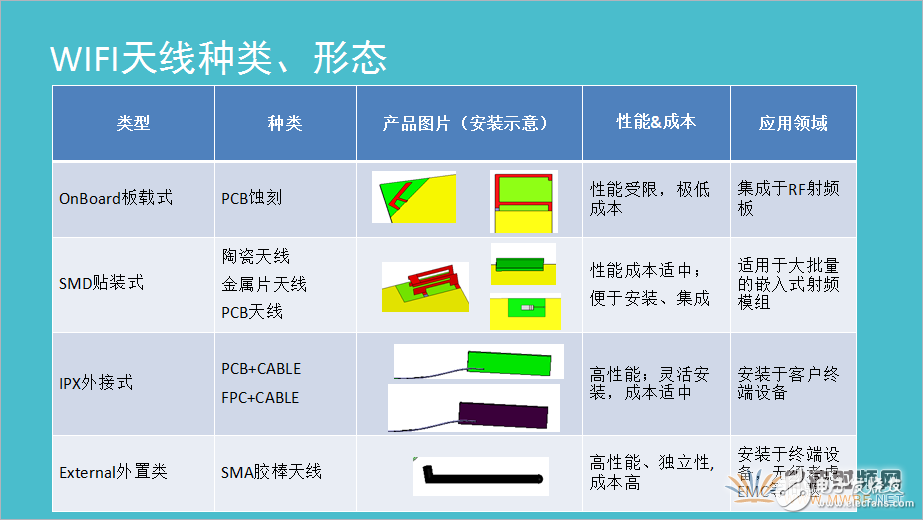As market competition intensifies, hardware devices are developing in an integrated direction. Antennas have also evolved from external evolution to embedded, and we will first introduce the types of antennas for this type of application:
(1) On Board onboard: integrated with PCB etching, limited performance, very low cost, used in Bluetooth, WIFI module integration;
(2) SMT mount type: the material is ceramic, metal sheet, PCB, and the performance cost is moderate, suitable for high-volume embedded RF modules;
(3) IPX external connection: use PCB or FPC + Cable combination, excellent performance, moderate cost, widely used in OTT, terminal equipment;
(4) External external category: plastic rod antenna, high performance, independence, high cost, applied to terminal equipment, no need to consider EMC and other issues;

External antennas are well known, so let's take a look at the space required for the three types of built-in antennas:





Let's summarize the space requirements and performance indicators:

The above is the antenna design reference for WIFI2.4G.
Fresnel Lens (Fresnel lens), also known as threaded lens, is mostly a sheet made of polyolefin material, but also made of glass. One side of the lens surface is smooth, and the other side is engraved with concentric circles from small to large. , Its texture is designed according to the interference of light and the requirements of relative sensitivity and receiving angle.
Fresnel lens is equivalent to infrared and visible light convex lens in many cases, the effect is better, but the cost is much lower than ordinary convex lens. It is mostly used in occasions where accuracy is not very high, such as slide projectors, film magnifiers, infrared detectors, etc.
The Fresnel lens has two functions: one is focusing, that is, the pyro-infrared signal is refracted (reflected) on the PIR, and the second is to divide the detection area into several bright and dark areas, so that it can enter the detection area A moving object can produce a changing pyro-infrared signal on the PIR in the form of a temperature change.

Fresnel Optical Lens,Fresnel Lens For Diy Projector,Threaded Lens,Fresnel Lens Glass
Bohr Optics Co.,Ltd , https://www.bohr-optics.com